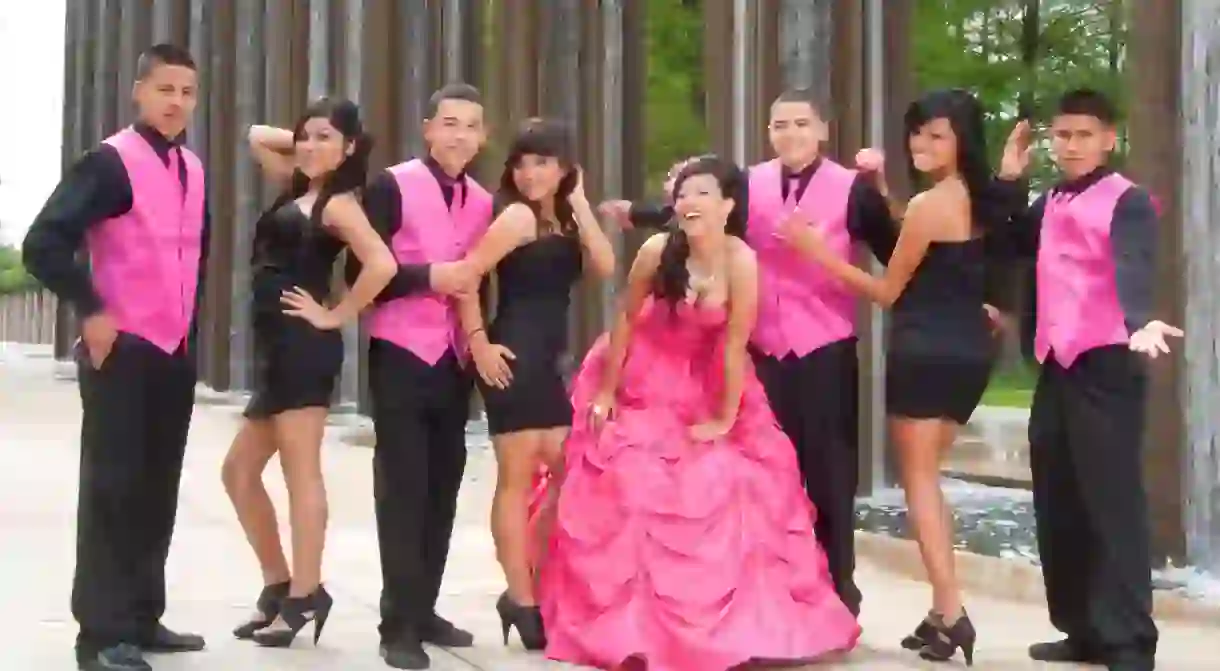A Brief Guide To The Quinceañera Tradition

Quinceañeras, despite being celebrated throughout the Americas, are most heavily associated with Mexico. The tradition has been in the news in recent weeks with the internationally viral debacle that was the XV de Rubí! While Western birthday girls are more familiar with the idea of a Sweet Sixteen birthday party, the quinceañera celebration celebrates the 15th birthday of the honouree and marks her transition to womanhood. Here’s a quick guide to quinceañeras.
Origins
While the quinceañera celebrations may have more in common with a wedding than a birthday party, they’re a traditional and enduringly popular rite of passage for many young Latinas; turning 15 is considered a momentous occasion, as it is the moment that they symbolically become young women.
For many, a quinceañera is seen simply as an excuse for a blow-out party with family and friends, but the actual significance of the tradition is tied into both Catholic and pre-Hispanic culture. Many years ago, this celebration was rather more literal than symbolic; in pre-Hispanic times, 15 was considered the appropriate age to begin childbearing, and in the 20th century the right time to be married. Luckily, this no longer tends to be the case, but even so the quinceañera tradition has endured!

Aesthetics
Everyone is familiar with the extravagant aesthetics of many quinceañera celebrations – think over-the-top Disney Princess-esque dresses in outrageous colors (though tradition once dictated that only white dresses were the order of the day), tiaras towering atop painstakingly ringleted hairdos and precariously high heels. The party is also supposed to be the birthday girl’s first time wearing makeup. Both the tiara and the shoes are typically gifted to the quinceañera for the occasion, along with a cross, bible, rosary and sceptre. In fact, the father of the quinceañera will often symbolically change her shoes from flats to heels before the beginning of the ceremony, to signify her transition to womanhood. Another symbolic gift is the Last Doll, representative of the quinceañera’s final childhood concern.
Aside from the gifts and attire, it’s also common to see dolled up quinceañeras in public parks and attractive locations having their professional pre-party photoshoot. Food-wise, expect plenty of traditional Mexican dishes and an extravagant cake, usually of the tres leches variety.


Traditions
If a quinceañera is done traditionally, there are a whole variety of complex religious and symbolic elements that go into it. The first is that of attending mass prior to the reception (yes, the quinceañera celebration is very wedding-like), at which the quinceañera may receive a personalised pillow to kneel on.
After mass, everyone will head to the party venue, at which the quinceañera receives more gifts, listens to toasts during which family members impart wisdom and dances a traditional waltz with her father, which is often followed by a choreographed routine with her Court of Honour. Speaking of which, another popular tradition is the selection of a Court of Honour! These are usually made up of the quinceañera’s cousins and close friends – the girls are called damas and the boys are chambelanes. However, as well as including friends in the ceremony, godparents (chosen by the parents) are also typically named and involved heavily in the festivities. Oftentimes, it’s these very godparents who foot some of the bill!

Misconceptions
We’ve left out just one small detail about the quinceañera tradition, and that is the fact that using ‘quinceañera’ to refer to the party itself is a common misnomer (that we’ve employed throughout this piece!). In Spanish, quinceañera actually refers to the birthday girl, whereas the party is known as the fiesta de quince años. The more you know!














